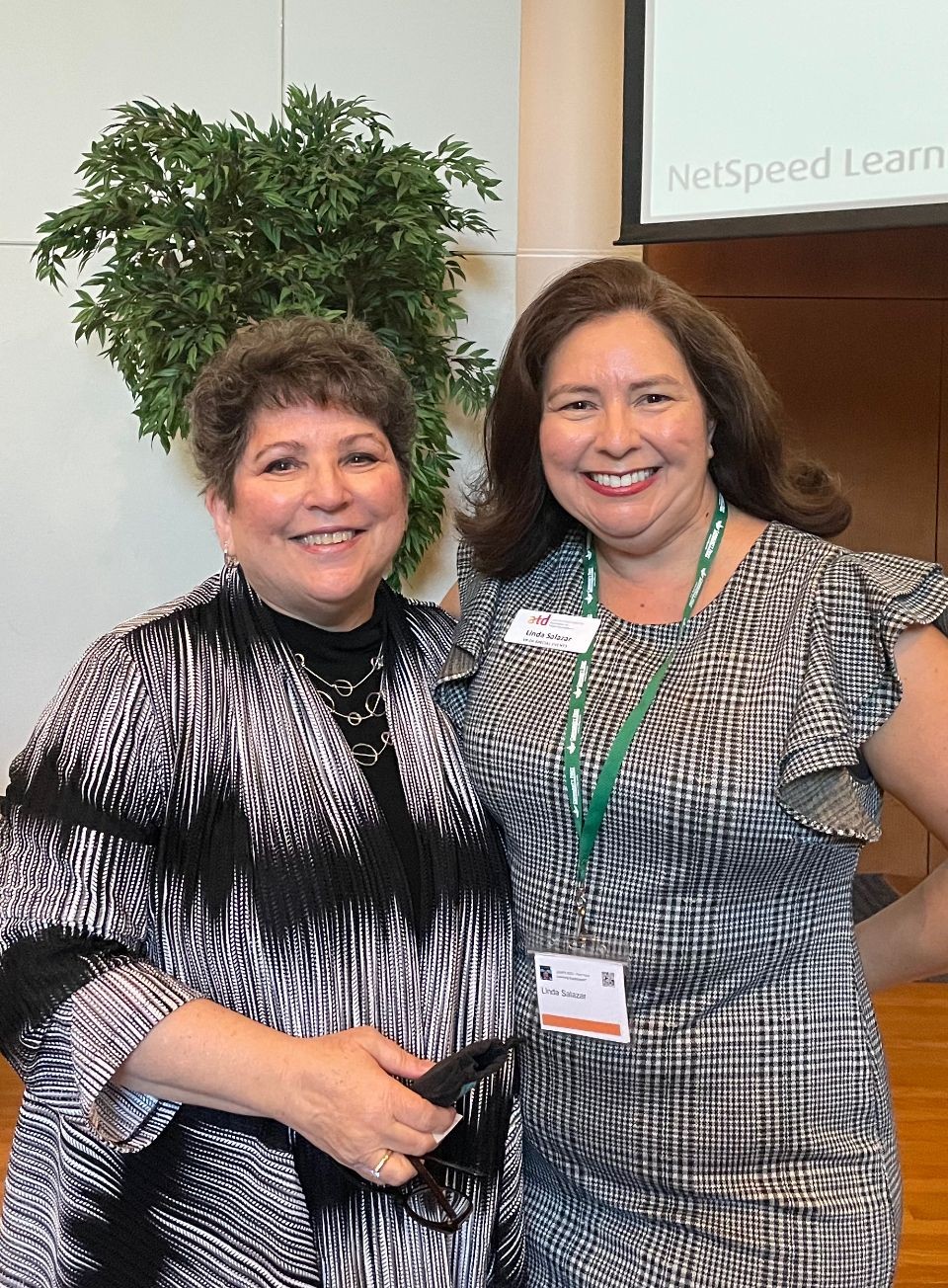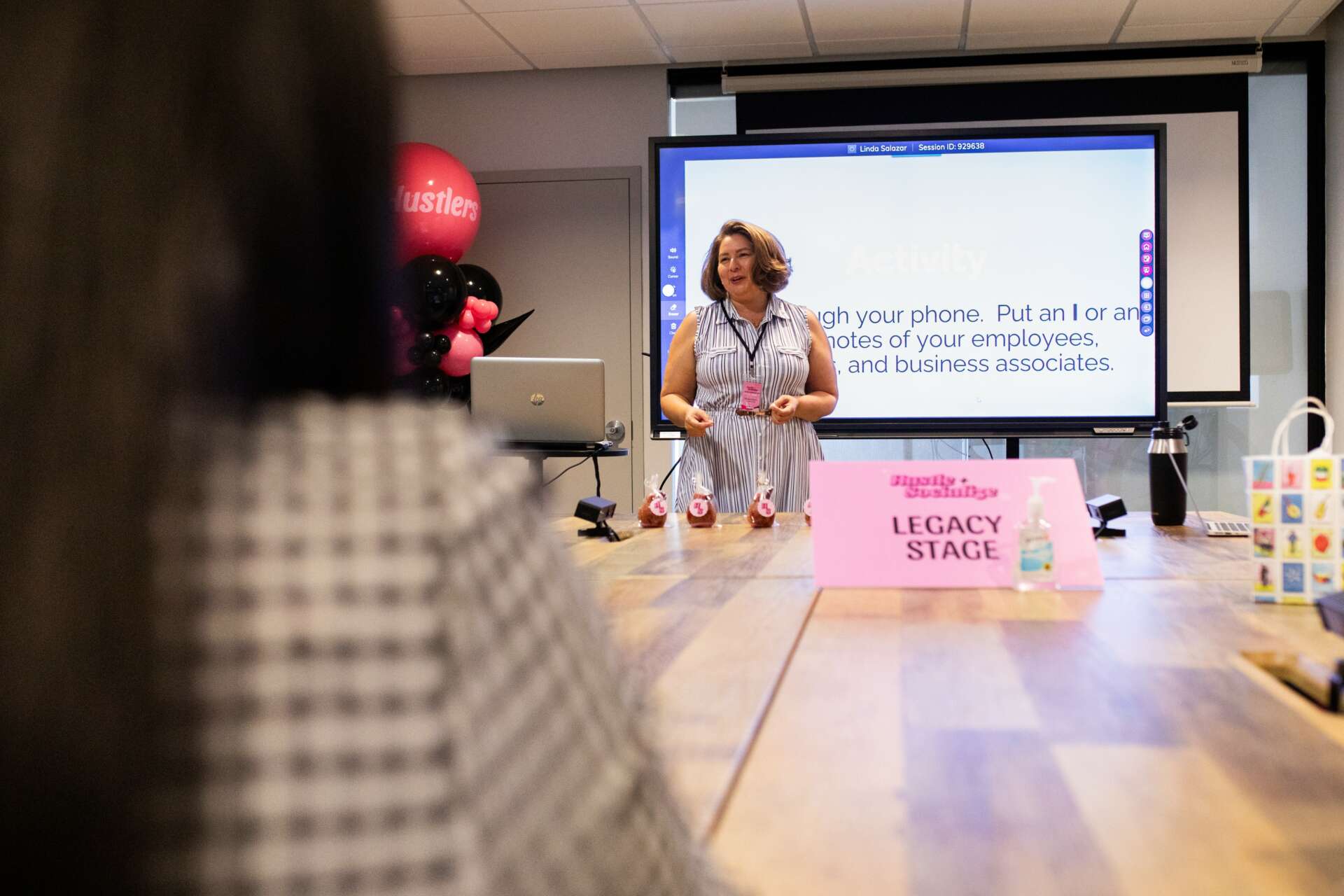We’re excited to introduce you to the always interesting and insightful Linda Salazar. We hope you’ll enjoy our conversation with Linda below.
Hi Linda, thanks for joining us today. What do you think Corporate America gets wrong in your industry?
One thing that Corporate America gets wrong is how they treat the talent development/training department like a “nice-to-have” rather than a crucial function of the organization and a strategic partner in solving business problems. Whenever money gets tight, trainers are the first to get cut. I, personally, have been laid off four times.
The fault lies on both sides. Often, corporate mistakenly views its training department as a necessary evil, a line item under expenses. They see us with our colorful markers and flipcharts. They peer into the classroom and watch employees doing fun activities instead of sitting at their desks being productive. It’s no wonder that when setting the annual budget, training is often not prioritized.
On the training side, we are not great at conveying our actual value to the organization. In the 90’s, the only numbers I reported to my boss were the number of employees who attended my classes and the average level of satisfaction they indicated on the feedback forms. In the 2000’s we finally started talking about return on investment (ROI). Even then, we didn’t really include all the costs of the training and only measured the improvement after the training event. It wasn’t until this year—25+ years into my corporate training career—that I learned to quantify the status quo.
Now, before I start booking classrooms and designing any training, I stop and ask the question, “How much is it costing the company if we do nothing?” Once I have that number, I use it to drive the learning solution. I come to the table with numbers the CFO and CEO want to hear. For example, I can tell them that the increased employee turnover this year is on track to cost the company $500,000, but our solution that cost a total of $100,000 has alleviated the problem both for this year and the coming years. I can show the true savings our department provided to the company.

Great, appreciate you sharing that with us. Before we ask you to share more of your insights, can you take a moment to introduce yourself and how you got to where you are today to our readers.
I help managers, HR representatives, and subject matter experts who have been volun-told to train employees even though they have no desire nor background to do so. My signature course, Train-the-Non-trainer Deputization, came from my own personal experience as a corporate trainer for the last 25+ years. My coworkers often came to me feeling anxious and frustrated because their boss assigned them to train other employees. I would help them individually by walking them through my 3-step process to create the training. Then, I would coach them on standing at the front of the room to deliver it with confidence.
This happened repeatedly, so I created a recorded course—Employee Training; Your Rapid Roadmap for Success—and put it online at Udemy.com. To date, that course has been downloaded over 1,800 times in 96 different countries. This showed me that the scope of the problem is worldwide. It inspired me to start my own business, Bright Trainer, LLC, and create a more in-depth and robust course that includes everything that I put in the recorded training plus individual coaching.
People bring their topic(s), and we work together in a live, virtual class to create their own course. Afterward, they are invited to meet with me individually to review their training, tweak their delivery, as well as practice and received feedback on how to improve. In the end, they are ready to confidently deliver their own effective employee training.

Are there any books, videos or other content that you feel have meaningfully impacted your thinking?
Starting my own corporate training business at the age of 51, I knew I didn’t have time to mess around and find out. So, I joined the first cohort of 50 entrepreneurial women in Liz J. Simpson’s 12% Accelerator program. This was the key to quickly finding my niche as well as finding my tribe. The program started with a three-day training in Puerto Rico. There, I met women with different talents, from different industries, and at different places in their entrepreneurial path. We immediately became each other’s support system—a safe place to ask questions and share our triumphs and tribulations.
It was in this program that I began to hone in on the problem that I was uniquely positioned to solve and passionate about: the need for effective, engaging employee training. I also found out how much I didn’t know about doing discovery calls, creating proposals, and communicating my value. In six months, I feel that I gained years’ worth of business knowledge.

How do you keep your team’s morale high?
Here are three tips for successfully managing a team:
1. Get to know your people.
It’s tempting to spend your time churning through email, tweaking spreadsheets, and attending every single meeting to which you are invited. However, if you want your team to do their best, you have to invest the time to talk with them. Ask them what parts of their job they enjoy and why, what parts they don’t like and why, and what they enjoy doing when they’re not at work. You’ll likely uncover hidden talents and abilities, underutilized skills, and even unfulfilled dreams. When a new opportunity arises, you will already know who is a good fit and can give them the chance to shine.
2. One size does not fit all.
We tend to manage people the way we like to be managed (golden rule) but to really get the best work from people, we need to manage them the way they want to be managed (platinum rule).
For instance, when recognizing someone on your team for their good work, take into consideration how that person would like to be recognized. Some people prefer to be recognized in front of their peers and the bosses. Others prefer to be recognized privately in a one-on-one meeting. The same goes for giving out new assignments. Some people need lots of detail to feel comfortable moving forward. Others prefer a high-level overview and the freedom to do things their own way.
How do you know what approach to take with each employee? Ask them. They’ll tell you.
3. Don’t make decisions with the door closed.
Often times managers put pressure on themselves to have all the answers. Keep in mind that while you lead the team, you are also part of it. It’s ok to ask your team for suggestions, ask what has been tried in the past and what the results were, ask how they have seen a particular problem solved at other companies. Capitalize on what everyone on the team knows, not just what you know.
For example, I was called in by the VP of Payroll to provide training for her team because they were making too many mistakes. I sat with a team lead who walked me through their process. She explained that everyone is supposed to balance midway through the payroll process, then again at the end. She mentioned that not everyone was doing so, but if they did there would be no errors. So, instead of creating a training class for the team, I created a high-level checklist that included balancing both midway and at the end of the process. They implemented it, and the errors ceased. Had the VP just asked her leads why they thought there were so many errors, they could have quickly solved the problem.

Contact Info:
- Website: https://brighttrainer.com/
- Linkedin: https://www.linkedin.com/in/linda-salazar/
- Udemy: https://www.udemy.com/course/train-the-trainer-ls/?referralCode=CD4E1BC1A00206DF7737


